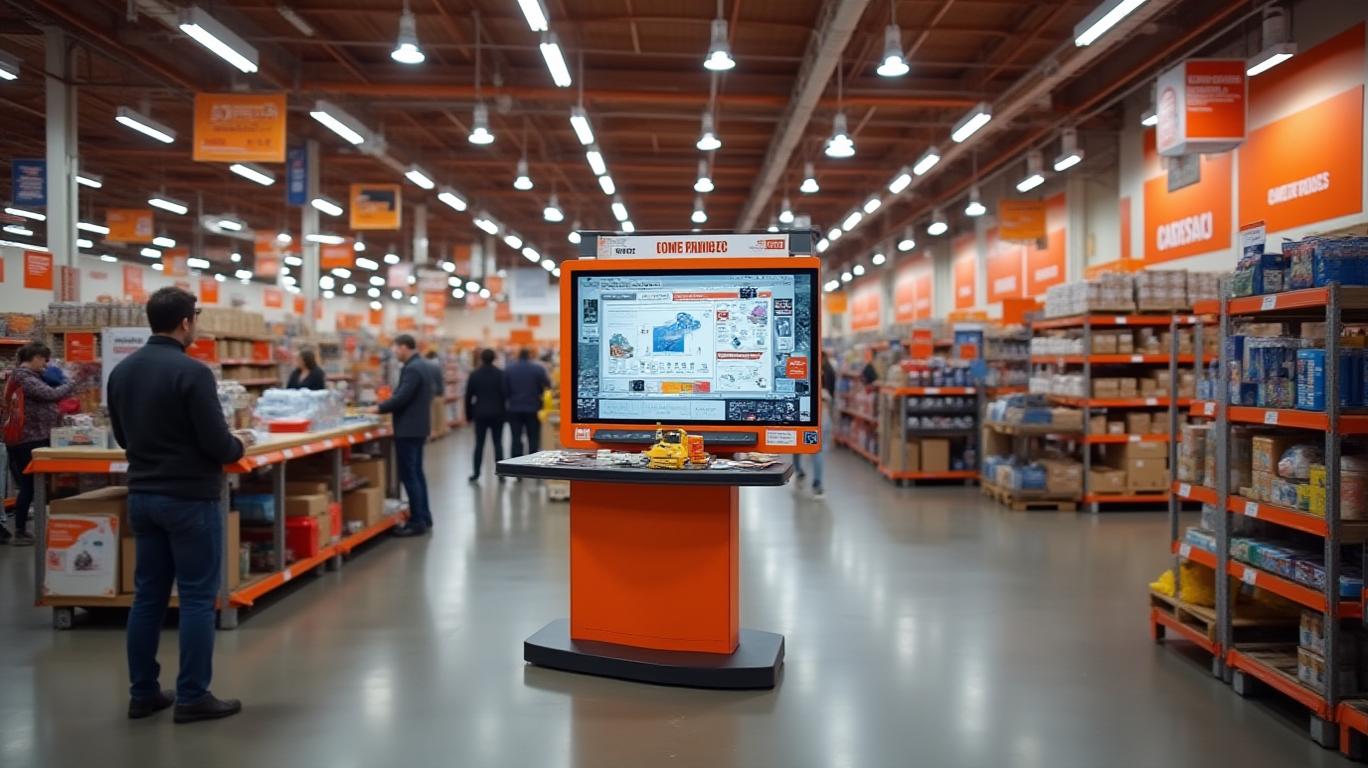The Home Depot: Navigating Macro Challenges to Capture Long-Term Value
Amid a backdrop of elevated interest rates, tariff pressures, and intensifying AI-driven competition,
(NYSE: HD) has emerged as a bastion of resilience in the home improvement sector. While short-term headwinds have dented near-term performance, the company's strategic moves—from AI-powered customer tools to supply chain diversification—position it to capitalize on long-term growth opportunities. With a robust financial foundation, undervalued stock, and a track record of outpacing rivals like Lowe's and Amazon, this is a compelling buy for investors seeking stability in volatile markets.
Interest Rates and Housing: Navigating the Headwinds
The U.S. housing market remains sluggish, with mortgage rates hovering near 7% and existing home sales declining 2.4% year-over-year. These conditions have historically pressured Home Depot's sales, as fewer home purchases mean fewer renovations and DIY projects. Yet, management's focus on smaller, seasonal projects—such as spring landscaping and minor repairs—has stabilized performance. In Q1 2025, U.S. comparable sales rose 0.2%, ending an eight-quarter streak of declines, while customer transactions increased 2.1% to 394.8 million.
The company's response to high borrowing costs is twofold:
1. Diversification Beyond DIY: The $18.25 billion acquisition of SRS Distribution in 2024 has bolstered its B2B business, which now accounts for 30% of sales. This segment, serving professional contractors, is less cyclical and more resistant to housing downturns.
2. Operational Efficiency: A 13.4% adjusted operating margin (despite tariff pressures) underscores cost discipline. Capital expenditures remain at 2.5% of sales, ensuring cash flow remains robust for reinvestment.
Tariffs: A Strategic Defense
Global trade tensions and tariffs have added 70 basis points of headwind to Home Depot's Q1 comparable sales. Yet, the company has avoided broad price hikes through a mix of domestic sourcing (50% of purchases) and supplier diversification. Unlike Walmart, which has warned of potential inflation pass-through, Home Depot's “everyday low price” commitment has maintained customer loyalty.
The SRS acquisition further shields the company from geopolitical risks:
- Supply Chain Resilience: Plans to cap foreign sourcing from any single country at 10% by year-end reduce exposure to trade disputes.
- Pro Credit Infrastructure: SRS's mature digital credit system now serves 90,000 professional accounts, enabling faster bulk purchases and job-site deliveries.
AI and Automation: A Competitive Moat
While rivals scramble to catch up, Home Depot is deploying AI to redefine customer engagement and operational excellence:
1. Magic Apron: This generative AI tool, embedded on product pages, offers real-time project guidance, material lists, and troubleshooting. Expanding to its Pro B2B platform, Magic Apron could boost average order values by simplifying bulk-order logistics.
2. AI-Powered Logistics: By 2026, 10% of suburban stores will transition into robotic fulfillment centers, enabling same-day delivery in 90% of markets. This outpaces Amazon's home goods delivery times and leverages Home Depot's 2,350-store network.
3. Employee Tools: Store associates now use AI-driven “Pocket Guide” apps to access tutorials and project advice instantly, reducing customer wait times and improving sales conversions.
These initiatives align with a broader “One Home Depot” strategy, where physical stores and digital platforms are seamlessly integrated. The result? A 9% surge in e-commerce sales in Q4 2024 and a 98% national store coverage area, unmatched by online-only competitors.
Valuation: A Discounted Leader
At a trailing P/E of 14.5—well below Lowe's 16.8 and Amazon's 35.2—Home Depot's stock appears undervalued. Morningstar's $308 fair value estimate suggests 20% upside from its current $379 price, while analysts project a 33.4% gross margin by 2025.
The company's financial fortress supports this thesis:
- Debt-Adjusted Growth: While total debt exceeds $53 billion post-SRS, EBIT is projected to cover interest 10x by year-end 2025.
- Margin Resilience: Despite Q1's 0.3% comparable sales dip, adjusted EPS held at $3.56, reflecting a 13.4% operating margin.
Why Buy Now?
The Home Depot is a textbook example of a company turning macro challenges into competitive advantages:
- Interest Rate Risks: Mitigated by B2B growth and seasonal resilience.
- Tariff Pressures: Offset by domestic sourcing and supplier diversification.
- AI Competition: Outpacing rivals with tools like Magic Apron and robotic warehouses.
While near-term sales may remain muted until mortgage rates fall below 6% (projected for 2026), the stock's valuation and strategic initiatives offer a margin of safety. Investors who buy now gain exposure to a company primed to dominate the $600 billion U.S. home improvement market, with a dividend yield of 1.6% and a clear path to long-term outperformance.
Final Call: The Home Depot is a buy at current levels. Its blend of defensive fundamentals, AI-driven innovation, and undervalued stock makes it a rare “recession-resistant” growth play in today's market.

Comments
No comments yet